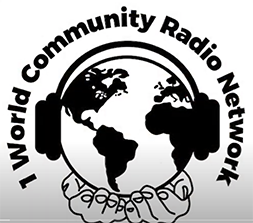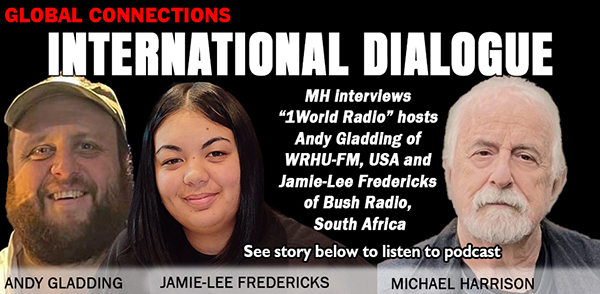By Andy Gladding
Chief Engineer
WRHU-FM (Hofstra University), Hempstead, NY
 College radio is a special place on the FM dial. Listeners know it as the channel at the low end of the band where student and volunteer DJs have free reign to play music not usually heard from commercial operators. College students recognize it as a place where they can hone their broadcasting skills and put their passion and talents to work to prepare for a career in the industry. Hiring managers recognize it as a proving ground that provides quality pre-professional development and a destination to seek out qualified candidates to fill entry level media industry roles.
College radio is a special place on the FM dial. Listeners know it as the channel at the low end of the band where student and volunteer DJs have free reign to play music not usually heard from commercial operators. College students recognize it as a place where they can hone their broadcasting skills and put their passion and talents to work to prepare for a career in the industry. Hiring managers recognize it as a proving ground that provides quality pre-professional development and a destination to seek out qualified candidates to fill entry level media industry roles.
Despite the widespread recognition of the benefits and value of college radio stations, the format and institution has come under attack. Financial issues affecting the commercial sector of terrestrial broadcasting have led to a reduced perception of the effectiveness and reach of terrestrial FM, causing many universities across the country to part ways with their beloved heritage stations. Religious and community operators, recognizing the vulnerability of college operators, have actively approached educational institutions with cash offers to acquire the licenses and effectively end the independent radio voice of the college into the community. Many universities, facing their own financial issues due to declining enrollment and national attacks on the value and benefits of a four-year liberal arts education, are welcoming the opportunity for a quick infusion of cash for the acquisition their broadcast assets. This troubling trend paints a grim outlook for the future and sustainability of this widely popular medium.
However, in some markets, college radio is thriving and enjoying a renaissance. The New York radio market enjoys a wide variety of college programming across its heavily populated FM band and college stations in this market are considered a clearinghouse for students looking enter the country’s largest media sector. The tri-state area has over 20 university-owned stations operating on the FM band, with their parent organizations often touting them as some of the brightest jewels in the crown of their college media and communications program.
I have spent 20 years working as a student volunteer and administrator at WRHU, Radio Hofstra University and have seen first-hand how college radio contributes to the growth and success of students looking to pursue a career in radio, television and digital media. Students and community volunteers who participate at college radio stations find themselves engaged in a diverse community of voices, opinions and music. While their approach and interests may be different, their practice at the college radio station unites them with one unified goal: to serve the listening audience by creating imaginative and alternative audio programming using the university’s FM transmission facility as their channel to the world. For anyone who has been part of this experience as either a contributor or listener, the results can be absolutely magical. In the New York / New Jersey market, these stations and students have found a unique way to make their voices even louder, using some of the finest tools available in their radio and audio toolbox.
The Big 88
Wednesday, November 8, eight university and high school owned and operated stations broadcasting in the 88.1-88.9 segment of the FM band in the number one media market in the country will be joining together to celebrate their love of college radio. Starting at 12:00 noon, “The Big 88” will become New York and New Jersey’s largest college radio station, covering an FM broadcast footprint of over 120 miles. Participating stations will include WRSU, Rutgers University; WPSC, William Patterson University, WRHU, Hofstra University; WCWP, LIU Post; WARY, Westchester Community College; WFNP, SUNY-New Paltz; WPOB, Plainview-Old Bethpage High School; and WKWZ ,Syosset High School.
Programming will feature voices and shows from all participating stations, a consolidated newscast from members of each station’s news department and appearances by station alumni working in radio. WRHU will also be hosting a meet and greet at their studios in Hempstead, NY, where participants are invited to gather to exchange station swag, music from local bands and stories. High school participants have also been invited to the WRHU studios to meet with the participating station members where they will get a first-hand look at what their college radio experience can look like. All of the participating stations hope that the broadcast will focus attention on the issues affecting college radio and encourage listeners and universities to continue to support the mission of student and community broadcasting.
For more information on the program schedule and participation, you can contact me at Andrew.j.gladding@hofstra.edu. All of the stations involved hope that listeners will tune in to enjoy this unique celebration of NCE radio.
Andy Gladding is the chief engineer and air personality at WRHU-FM, Hofstra University as well as chief engineer at Salem Media’s WNYM/WMCA, New York. He also is a communications lecturer at Hofstra.
Share this with your network
 in Cape Town — in which the broadcasters shared ideas about better serving their communities, the broadcasters came together to record an original song co-written and produced by broadcast engineer Dr. Andy Gladding EdD (WRHU-FM and Salem Media Group New York). The song is performed by DJs from “Bush Radio” and WKZE, Red Hook, New York. See the music video here.
in Cape Town — in which the broadcasters shared ideas about better serving their communities, the broadcasters came together to record an original song co-written and produced by broadcast engineer Dr. Andy Gladding EdD (WRHU-FM and Salem Media Group New York). The song is performed by DJs from “Bush Radio” and WKZE, Red Hook, New York. See the music video here.


 The best thing about attending media conferences like TALKERS 2024: Radio and Beyond, which occurred last week on June 7, is the opportunity to hear diverse viewpoints from industry experts. Gatherings like these also provide the opportunity for attendees like me to “chew” on some of the great ideas presented by the expert panelists and think about solutions to some of the challenges raised during the discussions.
The best thing about attending media conferences like TALKERS 2024: Radio and Beyond, which occurred last week on June 7, is the opportunity to hear diverse viewpoints from industry experts. Gatherings like these also provide the opportunity for attendees like me to “chew” on some of the great ideas presented by the expert panelists and think about solutions to some of the challenges raised during the discussions. WRHU-FM, Hempstead, New York chief engineer Andy Gladding played a role in organizing the November 8 event when eight university and high school owned-and-operated stations broadcasting in the 88.1-88.9 segment of the FM band in the number one media market in the country join together to celebrate their love of college radio. Starting at 12:00 noon ET, “The Big 88” will become New York and New Jersey’s largest college radio station, covering an FM broadcast footprint of over 120 miles. In a story written for TALKERS magazine, Gladding says that despite the rash of American colleges selling their radio properties, the New York market has a vibrant college radio community. He says college radio stations have a special value. “I have spent 20 years working as a student volunteer and administrator at WRHU, ‘Radio Hofstra University,’ and have seen first-hand how college radio contributes to the growth and success of students looking to pursue a career in radio, television and digital media. Students and community volunteers who participate at college radio stations find themselves engaged in a diverse community of voices, opinions and music. While their approach and interests may be different, their practice at the college radio station unites them with one unified goal: to serve the listening audience by creating imaginative and alternative audio programming using the university’s FM transmission facility as their channel to the world.
WRHU-FM, Hempstead, New York chief engineer Andy Gladding played a role in organizing the November 8 event when eight university and high school owned-and-operated stations broadcasting in the 88.1-88.9 segment of the FM band in the number one media market in the country join together to celebrate their love of college radio. Starting at 12:00 noon ET, “The Big 88” will become New York and New Jersey’s largest college radio station, covering an FM broadcast footprint of over 120 miles. In a story written for TALKERS magazine, Gladding says that despite the rash of American colleges selling their radio properties, the New York market has a vibrant college radio community. He says college radio stations have a special value. “I have spent 20 years working as a student volunteer and administrator at WRHU, ‘Radio Hofstra University,’ and have seen first-hand how college radio contributes to the growth and success of students looking to pursue a career in radio, television and digital media. Students and community volunteers who participate at college radio stations find themselves engaged in a diverse community of voices, opinions and music. While their approach and interests may be different, their practice at the college radio station unites them with one unified goal: to serve the listening audience by creating imaginative and alternative audio programming using the university’s FM transmission facility as their channel to the world.  College radio is a special place on the FM dial. Listeners know it as the channel at the low end of the band where student and volunteer DJs have free reign to play music not usually heard from commercial operators. College students recognize it as a place where they can hone their broadcasting skills and put their passion and talents to work to prepare for a career in the industry. Hiring managers recognize it as a proving ground that provides quality pre-professional development and a destination to seek out qualified candidates to fill entry level media industry roles.
College radio is a special place on the FM dial. Listeners know it as the channel at the low end of the band where student and volunteer DJs have free reign to play music not usually heard from commercial operators. College students recognize it as a place where they can hone their broadcasting skills and put their passion and talents to work to prepare for a career in the industry. Hiring managers recognize it as a proving ground that provides quality pre-professional development and a destination to seek out qualified candidates to fill entry level media industry roles.